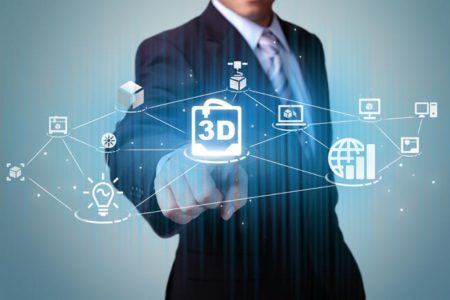Justifying 3D Printing for Your Company (Part 2 of 3) - Collecting the Information
This a part 2 of a 3 part series discussing basics of justifying 3D printing equipment for your company. It is broken down into 3 basic tasks:
- Choosing the correct 3D Printer (click here to view previous blog)
- Collecting information
- Creating the presentation

After completing Step 1 above, you should have narrowed your choice of 3D printing technologies and selected a couple of models to evaluate. Now we can begin Collecting Information for the justification process.
Most people will consider cost of the 3D printer as the only data point to be acquired, but actually there are 2 kinds of cost to evaluate. Recurring cost which are often replaceable items that will be an on-going expense and non-recurring cost which is a one-time investment. For example, a 3D printer would be considered a non-recurring cost, while the material required to run the 3D printer would be a recurring cost. These recurring and non-recurring cost should be separated in your data collection and must be evaluated independently in any forecast or return on investment calculations.
Non-recurring cost will include the initial cost of the 3D printing equipment along with any ancillary equipment for post processing, Ancillary equipment would include any wash tanks, sanding or grinding finishing stations as well as heat treat ovens and other items depending on the technology you are considering, Other non-recurring cost to take into account would be facility requirements; like build-out cost, power requirements, environmental requirements (temperature, humidity, air exchange, etc.), training and even IT expenditures.
Recurring cost may include elements such as materials, maintenance, licensing, leased space, post processing items and more. While some of these will be monthly disbursements and others a yearly amount, it is advisable to annualize the cost of each category as a standard unit of measure for forecasting expenses.
While researching the cost, don’t overlook opportunities to offset your investment. There may be financial programs available such as grants or even tax breaks or other incentives at a local, state and federal level. Manufacturers often offer discounts or rebates during the year. Even trading in obsolete equipment can help reduce the bottom line.
After we understand the base line of cost, we can move on to collecting information that will support the case of this expenditure. In step 1, Choosing the Correct 3D Printer, you should have identified primary and secondary applications that helped you select the correct technology. Let’s explore some of those applications by getting benchmarks, comparisons or estimates. Compare your current manufacturing methods and/or outside manufacturing cost with owning your own equipment. Don’t forget to place a monetary value on time savings. One of the greatest aspects of rapid prototyping is that it allows you to find your mistakes faster, there is a value on reducing rework and achieving faster time-to-market.
Benchmarks can be very successful as it can give a true physical comparison as opposed to an estimate. Don’t under estimate the value of having physical models and samples at your presentation for justification (step 3). Select at least 3 examples; use the ‘Goldilocks’ method to convey an overall idea that your research is in-depth. Choose a lesser application, one that would probably have a smaller payback or savings and is still beneficial. Then a comparison on a larger project with significant savings. And lastly, the average application that would be the most widely used in your company. This is the comparison with the largest accumulated payback since it would be the most used.
Investigate other companies that use 3 D Printing for similar applications. If they are not competitors in the same industry they me be inclined to share actual case studies. Also, research your competition, if they have 3D Printing find out how they are using it. Leveraging competitive examples can be extremely beneficial to your justification presentation.
Consider ‘Risk’ in your data collection. Risk is often thought of as “What can go wrong?” in this case define risk as “What if we do nothing?”. Think of loss opportunities, delays, engineering changes, market research and other factors that would be lost be remaining stagnant.
Now you can create some payback calculations with your collected cost, examples and identified risk. There are different analysis tools; ROI or Return on Investment, NPV or Net Present Value and IRR or Internal Rate of Return that may be used by your company to justify a tangible payback. The most common analysis is ROI which is simply an investment metric to measure the rate of return to recoup the expenditure over a period of time. The period of time is different for some companies, but is typically amortized somewhere between 12 to 18 months. Most companies have an ROI process already in place, if yours does not our 3D Printer sales person can assist in helping you create one,
Finally, remember your 3D salesperson as an important resource for data collection, they have case studies and contacts at other companies that may be willing to share their knowledge and savings. They have experience helping with ROI’s and cost analysis.
Our next blog, Part 3 will go into detail examining strategies in creating and presenting your justification.
Mark Abshire
Sr. Application Engineer, Additive Manufacturing
Computer Aided Technology, LLC

 Blog
Blog